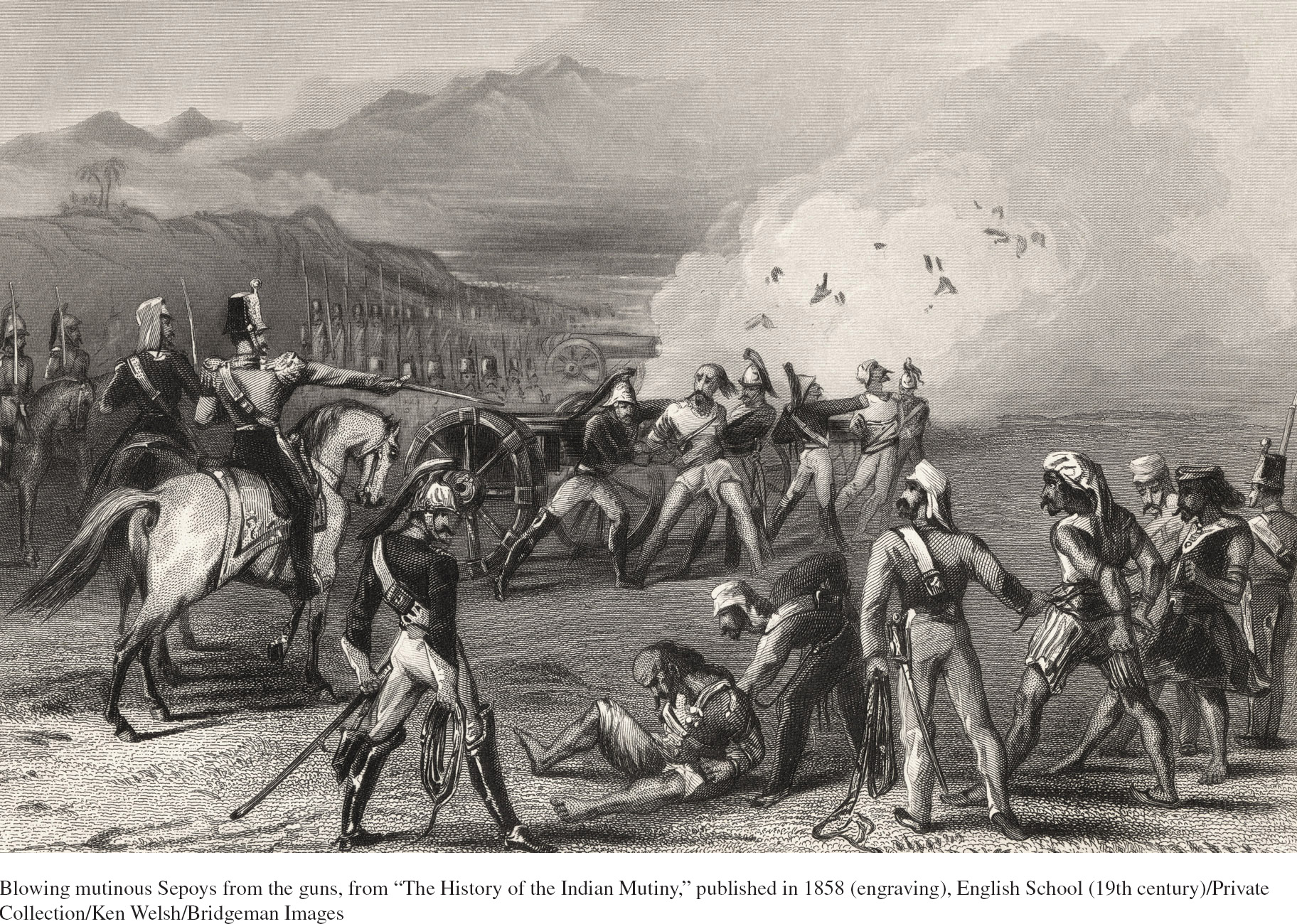
Blowing from a GunFollowing Mughal precedents, the British frequently employed a particularly horrific form of public execution for rebels by tying the victim, or sometimes several victims, to the mouth of a cannon and then firing it. This practice was used quite extensively during the Indian uprising of 1857– h-